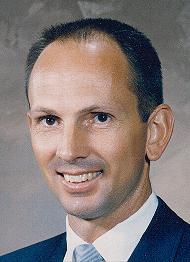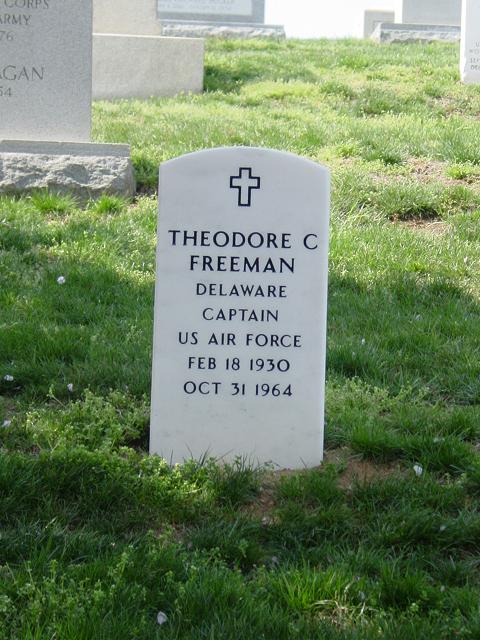Born February 18, 1930 in Haverford, Pennsylvania. Ted graduated from the United States Naval Academy with a bachelor’s degree in aeronautical engineering and earned a master’s degree in aeronautical engineering from the University of Michigan. Freeman and his wife Faith Clark Freeman, have one daughter, Faith Huntington.
Captain Freeman was a flight test aeronautical engineer and a flight test instructor at the Air Force’s Aerospace Research Pilot School. He logged over 3,000 hours of flying time.
He was chosen to be an astronaut, and was piloting a T-38 aircraft when it crashed at Ellington Air Force Base.
Theodore C. Freeman made the ultimate sacrifice and lost his life in service to the nation and the space program on October 31, 1964 at 34 years of age.
Born at Haverford, Pennsylvania, February 18, 1930, he attended the University of Delaware for one year and was graduated from the United States Naval Academy in 1953. He received his Master of Science degree in aeronautical engineering in 1960 from the University of Michigan. He chose the Air Force as a career even though he graduated from the Naval Academy.
He took flight training at Hondo and Bryan, Texas and at Nellis Air Force Base, Nevada, getting his wings in February 1955 shortly after being promoted to First Lieutenant.He then served in the Pacific and at George Air Force Base, California. He was promoted to Captain while at the University of Michigan and then went to Edwards Air Force Base, California, in February 1960 as an aerospace engineer.
He completed the Research Pilot’s Course there and remained as an instructor. He was a flight test aeronautical engineer at Edwards with 3,000 hours flying time, including 2,000 in jets when he was selected by the National Aeronautics and Space Administration NASA). He reported to the Manned Spaceflight Center at Houston, Texas, on January 15, 1964.
He was killed on October 31, 1964 in a T-38 jet plane crash at Ellington Air Force Base, Houston, Texas. A bird may have caused the accident when it smashed into the windshield of the aircraft. Witnesses said that the craft was at 300 to 500 feet when the canopy left the plane. It was not clear whether he had ejected or had been thrown from the plane on impact. His body was found about 100 yards from the wreckage, the parachute partially opened. The plane did not burn on impact. He was among the third group of fourteen astronauts named on October 18, 1963.
He was buried with full military honors in Section 4 of Arlington National Cemetery.
Michael Robert Patterson was born in Arlington and is the son of a former officer of the US Army. So it was no wonder that sooner or later his interests drew him to American history and especially to American military history. Many of his articles can be found on renowned portals like the New York Times, Washingtonpost or Wikipedia.
Reviewed by: Michael Howard


